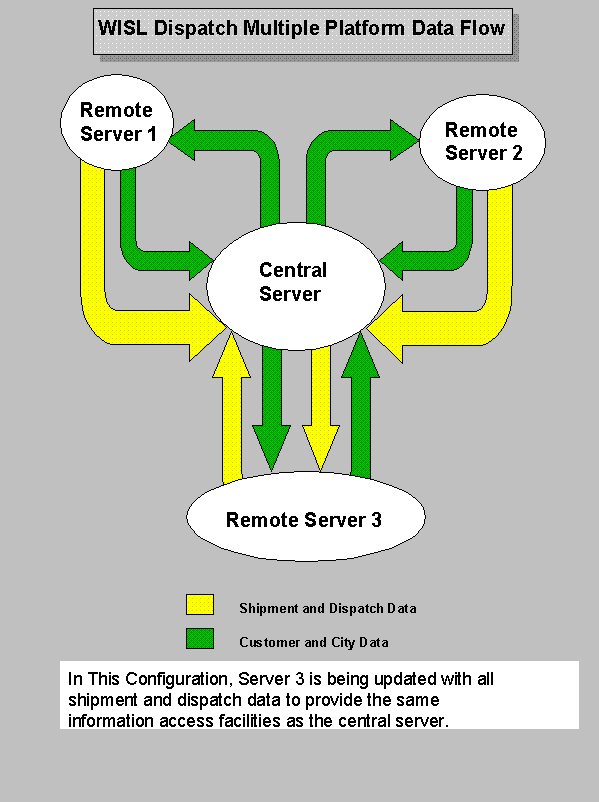
WISL Dispatch System
Multiple Platform Implementation
Waterloo Information Systems Limited
33 Dupont Street East
Waterloo, Ontario
N2J 2G8
© Waterloo Information Systems Limited 1996
The information contained herein is proprietary and considered a trade secret of Waterloo Information Systems Limited and shall not be reproduced in whole or in part without the written authorization of Waterloo Information Systems Limited.
I. Introduction
The WISL Dispatch System is designed to accommodate multiple freight terminals on the same open systems platform. In this model, workstations at remote freight terminals connect to the central server via communication lines and all processing is accomplished on the central server with a single centralized data base. The advantages of this approach are the advantages that accrue to any centralized information system. All relevant data is available to all users in real time and there is no data redundancy.
The major disadvantage of the single server model handling remote users is the dependence on and cost of remote communications. Remote interactive users must be continually connected to the central server via expensive and less reliable facilities than local connections.
The goal of the multiple platform implementation of WISL Dispatch is to provide the operational and cost advantages of distributed server platforms yet to retain the capability to access all relevant dispatch and shipment data on a central platform.
Distributed Configuration
One of the servers running WISL Dispatch is designated as the central server and it is necessary to establish communication links between the central server and each of the remote servers. Although it is not necessary to effect real time update of the central data base, it is required to transmit updates to the central server periodically. Frequency of update is determined by the immediacy requirements of the installation.
The framework for the transfer mechanism is provided by WISL EDI - Transportation. The same structure and control that WISL EDIT provides for transmission of standard EDI transactions is utilized to transmit updated dispatch and shipment records between WISL Dispatch remote and central servers. The appended flow diagram illustrates the data flow between the central and remote servers.
Interfaces with information systems residing on other platforms such as billing or fiancial accounting would be handled between the central server and the given platform.
Data Base Implications
To provide for centralized shipment tracing and tracking and to allow effective generation of management information it is necessary to create at least one complete copy of the shipment data base on the central server. If desired, the central server can distribute all shipment data to all servers which then allows each of the remote servers to offer centralized information access capabilities.
Date/time stamp data attributes are stored on each record to indicate the most recent maintenance of the record, when it was last transmitted to the central server and when it was most recently transmitted by the central server. These data attributes help to minimize data transmission by insuring that records are not transmitted that have not changed since the last transmission.
Care is taken in the block assignment of record keys to insure unique identification of
dispatch and shipment records. The transmission mechanism is also used to distribute the
latest status of other records such as customer and city file updates.